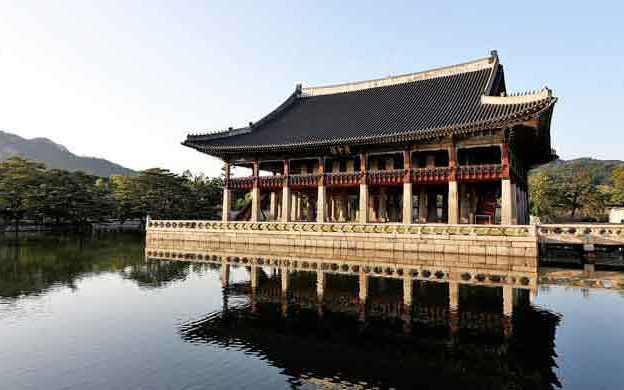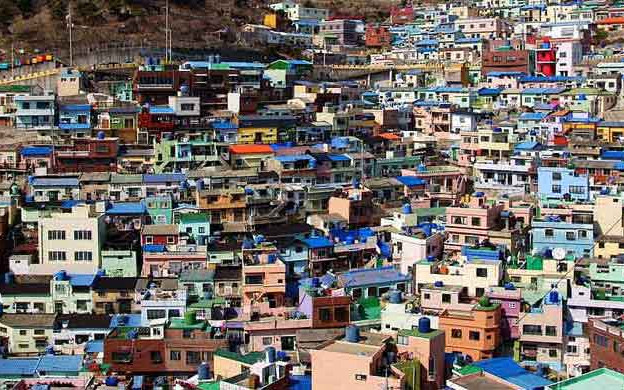Dive into the heart of South Korea
4.8/5198 reviews
South Korea, between fascinating tradition and modernity.
Explore the cultural and natural wonders of Korea.
Must-see locations
South Korea: A Journey Between Traditions and Innovations.
Recently opened to international tourism, South Korea has diversified its activities to become an attractive destination for everyone. A trip to South Korea will appeal to culture enthusiasts, sports fans, and shopping lovers alike. Thanks to the internationalization of certain K-pop groups and the organization of the Pyeongchang Olympics in 2018, South Korea is thriving!
Seoul, this vast modern capital, contrasts with beautiful natural landscapes and preserved villages where time sometimes seems to stand still. The most remote regions, easily accessible thanks to the excellent Korean transport network, offer a dive into traditional Korea with temples, Buddhist monasteries, and national parks. Fine Korean cuisine and countless sports activities complete the exploration of a unique country that attracts an increasing number of visitors every year. Depending on your tastes and desires, a local travel agency can establish the right tailor-made itinerary for you in South Korea.
A tailor-made journey to the land of contrasts
Embark on a journey to discover the southern part of the Korean peninsula, nestled between the Yellow Sea and the Sea of Japan. Meet welcoming people immersed in a culture where traditions are alive. Discover the land of Kimchi and Bibimbap! It's time for a tailor-made trip to South Korea!

Must-see Attractions to Discover
Seoul, vast and bustling, is developing while preserving its culture. It hosts numerous monuments classified as UNESCO World Heritage sites. The city combines a rich heritage with a thriving high-tech activity. This Korean megacity, a blend of eras, is an unforgettable stop when traveling to South Korea.
Jeju Island, the largest in South Korea, is often compared to Hawaii for its volcanic formation and landscapes mixing mountains and paradise beaches. It is a popular destination for honeymoons, reminiscent of Hawaii.
Located 270 km from Seoul, Andong is the birthplace of Confucianism in Korea. The village of Hahoe is classified as a UNESCO World Heritage site. The International Mask Dance Festival is a must-attend event.
The Korean Demilitarized Zone (DMZ), created in 1953, separates the two Koreas. It was the site of the historic meeting between Kim Jong-un and Moon Jae-in in 2018. This impressive site is also a natural park.

Must-do Activities in South Korea
Boseong Province is the main tea-producing region in South Korea. In the spring, Koreans from all over the country visit to participate in the Green Tea Festival. You can walk through the tea fields, watch the picking process, and enjoy tastings on-site. The highlight: green tea ice cream!
With 1,700 years of Buddhist history, South Korea is rich in temples. They are often located in mountainous areas ideal for meditation. Situated in the village of Ttangkkeut Maeul, Mihwangsa Temple offers a superb view of Mount Dalmasan and the South Sea. Don't miss the magnificent sunsets from the temple!
The Boryeong Mud Festival takes place every summer at the end of July on Daecheon Beach. It attracts visitors from all over the world who enjoy playing with pure mud, which has proven benefits for the skin. It's a perfect blend of fun and wellness!
Busan is the country's second-largest city, famous for its renowned beaches such as Haeundae, Gwangalli, and Songjeong. Explore the colorful neighborhoods and escape for a few hours from the city's urban environment. It's also an opportunity to discover one of Korea's largest temples, Beomeosa Temple, built 1,300 years ago!
Traditional Villages: An Asset of Authenticity
The development of domestic tourism and the modernization of cities have led to the promotion of traditional villages throughout the country. Easily accessible thanks to shuttles from neighboring cities, these villages offer a true immersion into Korea of the past. Apart from Bukchon and Namsangol, the closest to Seoul is near Suwon. However, it is around Andong, in the southeast, that the most authentic villages are concentrated.
The traditional village of Hahoe, listed as a UNESCO World Heritage site, is one of the most charming. The inhabitants live according to their traditions, offering some guest rooms for an original stay. The Korean government encourages green tourism, symbolized by these villages present in every region. There, one can discover ancient crafts and forgotten traditions, with craft workshops and costume shows. These villages also open the doors to the Korean countryside.
Jeju, a Tourist Paradise Favored by Koreans
Jeju Island, located south of the Korean peninsula, was long the destination for exiles of the kingdom. With a milder climate than the rest of Korea and a magnificent coastline, it is now popular among Korean tourists. This "paradise" can surprise with its overhyped appearance and summer crowds, but also with its wild and beautiful corners, earning it the nickname "Korean Hawaii." Accessible by boat, most visitors prefer the plane. There are seaside hotels, beaches, and water activities, hikes on volcanic slopes, and hot springs. Jeju embodies South Korea's leisure society. In Busan, the country's second-largest city, there are also beaches close to downtown. Since the 1980s, amusement parks, beaches, and leisure centers have multiplied, reflecting a proud and forward-looking people.
A website by
Customize your trips with Quotatrip and receive tailor-made offers directly in your inbox.